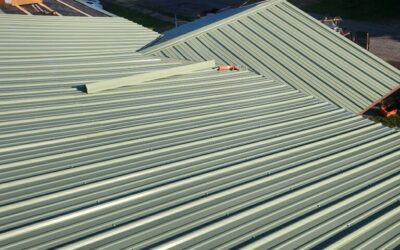Roof Storm Damage Checklist: How to Assess, Repair, and Protect Your Roof After a Storm
When a storm hits, the aftermath can be overwhelming, especially when it comes to your home’s roof. As one of the most crucial elements of your home, your roof serves as the first line of defense against rain, wind, hail, and extreme temperatures. That’s why it’s important to have a storm damage checklist on hand to quickly assess your roof’s condition, identify issues, and take the necessary steps to prevent further damage.
This comprehensive roof storm damage checklist will guide you through the steps of evaluating roof damage after a storm, determining whether repairs or a full replacement is needed, and understanding how to protect your roof moving forward. Whether you’re a homeowner, a contractor, or a property manager, this checklist will serve as an essential tool to ensure the safety and longevity of your roofing system.
Why It’s Important to Assess Roof Storm Damage Quickly
The aftermath of a storm can be chaotic, with many factors competing for your attention. However, your roof should be one of the first things you check. Here are a few reasons why immediate assessment is crucial:
- Prevent Further Damage: A minor issue like a missing shingle can escalate quickly if left unaddressed. Water can seep into your home and cause costly interior damage such as drywall, insulation, or structural rot.
- Insurance Claims: Most home insurance policies require you to document and report storm damage promptly. A checklist helps ensure you cover all necessary points when filing a claim.
- Safety: Roofs can often sustain hidden damage that may not be immediately visible. A thorough inspection helps you identify potential hazards, such as weakened structural components or loose materials that could pose safety risks.
- Long-Term Costs: Timely repairs can save you from more expensive repairs in the future. The longer you wait to assess or fix roof damage, the higher the risk of more severe damage, which could lead to a full roof replacement instead of simple repairs.
Step 1: Safety First – Assessing Roof Damage Safely
Before you start your roof inspection, safety should be your top priority. Storm-damaged roofs can present hidden dangers like exposed nails, sharp edges, or loose debris. Here’s how to stay safe:
1.1 Stay Grounded
- Avoid Climbing: Do not attempt to climb onto your roof immediately after a storm. Wet roofs are slippery, and there may be structural damage that makes them unsafe.
- Use Binoculars: You can perform a basic visual inspection from the ground or from a ladder. Using binoculars will allow you to see details without putting yourself at risk.
- Professional Help: If the roof appears to have significant damage, or if you’re unsure of your own safety, it’s best to call a professional roofing contractor to conduct a thorough inspection.
1.2 Check for Fallen Debris
- Inspect the Area Around Your House: Look for large branches, trees, or debris that may have fallen onto the roof. These can cause punctures or dislodge shingles. If debris is on your roof, wait until the storm has passed before attempting removal, as these items could be heavy or difficult to move.
- Look for Power Lines: Never go near downed power lines or other hazards that could pose an electrocution risk.
1.3 Document Everything
- Take Photos or Videos: As you go through your inspection, document the damage thoroughly. Most insurance companies will require visual evidence to process your claim.
- Create a Record: Write down any observations, including the type of damage you’ve identified. This will help you stay organized when discussing repairs or making an insurance claim.
Step 2: Visual Inspection – Checking for Common Signs of Storm Damage
Once you’re safely positioned and have taken the necessary precautions, it’s time to conduct a visual inspection of the roof. Here are the most common signs of roof damage after a storm:
2.1 Missing or Damaged Shingles
- Check for Missing Shingles: High winds can blow shingles off the roof. Check for areas where shingles are missing or damaged.
- Look for Curling or Buckling: Even if shingles are still in place, they could be compromised. Look for curled, cracked, or buckling shingles, which could be an indication of aging or storm damage.
2.2 Damaged Flashing
- Inspect Flashing Around Roof Penetrations: Flashing is the metal material installed around chimneys, vents, skylights, and other roof penetrations to prevent water leaks. If flashing becomes bent or cracked during a storm, water can infiltrate and cause leaks inside the house.
- Check for Rust: Rusted flashing is another sign of wear that may need replacing.
2.3 Cracked or Missing Ridge Cap Shingles
- Inspect the Ridge Cap: The ridge cap runs along the peak of the roof and helps seal the highest points of the roof. A storm can loosen or crack the ridge cap shingles, creating an opportunity for water infiltration.
2.4 Roof Valleys
- Look for Gaps in Roof Valleys: Roof valleys (the areas where two roof slopes meet) are a common area where debris can accumulate. Check to see if debris has clogged the valleys, which can cause water to back up and potentially leak into your home.
- Inspect for Missing Shingles: Missing shingles in the valleys can also increase the likelihood of leaks.
2.5 Gutter and Downspout Damage
- Check the Gutters: Gutters are critical in directing water away from your roof and foundation. Check gutters for dents, breaks, or clogs caused by storm debris. Damaged gutters can prevent proper drainage, leading to water buildup and leaks.
- Inspect Downspouts: Ensure that the downspouts are free from debris and direct water away from your foundation.
Step 3: Interior Inspection – Checking for Leaks and Water Damage
After inspecting the exterior, it’s time to turn your attention to the interior of your home. Water damage can often go unnoticed at first, but checking key areas can help you spot issues early.
3.1 Inspect Ceilings and Walls
- Look for Water Stains: Inspect your ceilings and walls for brownish water stains, which are indicative of a leak. Pay particular attention to areas where roof penetrations, such as chimneys or skylights, exist.
- Check for Peeling Paint or Wallpaper: In some cases, a leak may cause the paint or wallpaper to peel, which can be another sign of water infiltration.
3.2 Check Attic for Visible Leaks
- Examine the Attic: If accessible, go into your attic and look for signs of leaks or water damage. Water stains on the underside of the roof deck are a clear indication that there’s been an issue. You may also see wet insulation or mold growth in the attic.
- Look for Mold: Mold can form in areas that are exposed to moisture, so keep an eye out for any moldy smells or visible growth.
3.3 Assess the Insulation
- Check for Wet Insulation: Water can infiltrate the attic and wet the insulation. Wet insulation compromises the energy efficiency of your home, leading to higher heating and cooling costs. If you notice damp or soaked insulation, it’s time to address the source of the leak.
Step 4: Roof Repair and Restoration – What to Do Next
Once you’ve identified the storm damage, you have a few options for repair or restoration. Here’s a guide on what to do next:
4.1 Call a Professional Roofing Contractor
If your roof has significant damage, it’s important to call a professional roofing contractor. Roof repairs can be dangerous, especially after a storm, and roofing professionals have the experience and tools necessary to safely complete the repairs.
- Get Multiple Estimates: If you’re working with insurance, consider getting multiple repair estimates. This ensures that you’re getting a fair price for the work that needs to be done.
- Discuss Insurance: If you’re planning to file an insurance claim, a professional roofer can help assess the damage and provide an estimate that aligns with your insurance policy.
4.2 Temporary Repairs
If you’re unable to call a professional immediately, there are some temporary fixes you can perform to prevent further damage:
- Cover Leaks with a Tarp: If you notice a leak inside your home, you can use a tarp to cover the affected area. Secure the tarp tightly to prevent rain from entering the home.
- Seal Small Gaps: For minor roof damage, consider using roofing cement or tar to seal small gaps temporarily until a permanent repair is made.
4.3 Full Roof Replacement
In cases of severe storm damage, particularly with older roofs, a full roof replacement may be necessary. If the roof is beyond repair or if a significant portion of it is damaged, your contractor will help you determine whether a replacement is the most cost-effective solution.
Step 5: Prevent Future Storm Damage
After repairing your roof, it’s time to focus on prevention. Here are a few steps you can take to protect your roof from future storm damage:
5.1 Regular Roof Maintenance
- Clean Gutters Regularly: Keep gutters clean and free of debris so that rainwater flows freely off the roof.
- Inspect the Roof Annually: Have your roof inspected at least once a year, even if no storm damage is suspected. Early detection of issues can save you money on repairs down the road.
5.2 Roof Reinforcement
- Consider Upgrading Materials: If you live in an area prone to severe storms
 (440) 307-2060
(440) 307-2060

